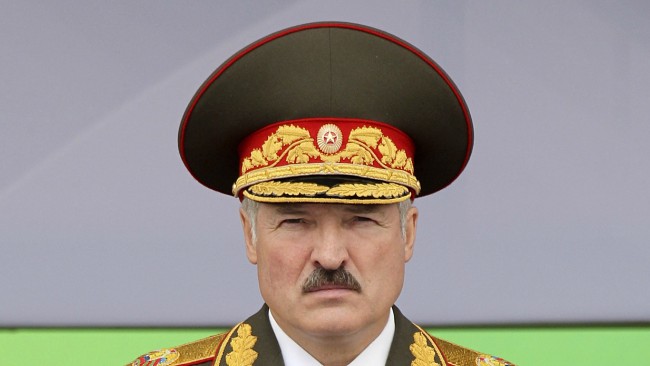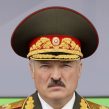
Belarus Prepares to Adopt New Military Doctrine
Publication: Eurasia Daily Monitor Volume: 13 Issue: 40
By:

In recent months, military affairs have featured high on the political and media agendas in Belarus. The House of Representatives of the National Assembly (the parliament’s lower chamber) is soon expected to consider and pass a new updated version of the country’s military doctrine. The current one has stayed unchanged since 2002.
On January 22, the draft doctrine was discussed and approved at a meeting of the Security Council. Introducing the document, President Alyaksandr Lukashenka underlined that by revising the military doctrine, the government was reacting to the new national security situation: “Conflicts between the Russian Federation and member states of NATO [the North Atlantic Treaty Organization] have burgeoned, if not to say more. And we find ourselves between them, like between a hammer and an anvil” (Tut.by, January 22). He also pointed to new challenges that require the state’s reaction—for instance, so-called “hybrid war,” which has now replaced traditional forms of wars.
Commentators quickly highlighted this official introduction of the term “hybrid war” as a major novelty in Belarus’s updated military doctrine (Naviny.by, February 17; Belarus Digest, February 3).
Later, Minister of Defense Andrey Raukou provided a more detailed account of what stands behind the revision. According to him, the internal destabilization of countries has become a commonly used method of political subversion (Tut.by, February 23). Once an internal conflict is provoked, a variety of other actions can follow—economic, political, terrorist and military; and they often result in the overthrow of acting governments. As a result, his country’s new doctrine foresees the possibility of internal conflicts and ways of preventing and liquidating them. It gives serious priority to coordinating the external and internal dimensions of national security, including in the media and information sphere, which was not the case before (Tut.by, January 22).
Another objective is to raise the armed forces’ mobility and readiness to quickly tackle all sorts of security threats in any part of the country (Nasha Niva, February 17). According to Raukou, the Belarusian army has long been developing a capacity to counteract hybrid wars. In particular, it has created special operations forces and is improving the system of territorial defense (Tut.by, January 22). In this context, he said that Belarus is studying and learning from Ukraine’s experience of dealing with a hybrid war.
One more novelty of the new military doctrine has to do with preventing “color revolutions.” According to Alyaksandr Mezhuyeu, the former state secretary of the Security Council and now a member of parliament, the updated document “will answer the question why the president keeps repeating that a color revolution will never happen in Belarus” (Sputnik.by, February 16). Thus, not only does the doctrine contain the term, it also proclaims color revolutions as a top national security threat. Against the backdrop of the Ukrainian developments in recent years, this does not look surprising.
The draft of the doctrine remains publicly unavailable. Therefore, officials’ media comments are the only source of open information about it. Besides the issues of hybrid wars and color revolutions, some statements by the authorities have referred to the military sector of the economy as another top concern for the doctrine—i.e. the need to develop a more self-sufficient arms producing industry and a balanced imports infrastructure (Belorusskoe Voennoe Obozrenie, February 3). This is also a logical and expected development given Belarus’ heavy dependence on Russia in acquiring military equipment and regularly occurring difficulties in that respect (Belarus Digest, February 3).
Public discussions about the army and security in Belarus in recent weeks have also gone beyond the updated military doctrine alone. Notably, President Lukashenka devoted much of his time openly discussing the issue of territorial defense. Several years ago, the government announced that the principle of territorial defense would be placed at the center of the country’s military strategy and, thus, Belarus created territorial armed units under the overall command of regional governors (Belorusskoe Voennoe Obozrenie, November 25, 2011). Now, Lukashenka has issued an order to test the readiness of these units and the whole system of territorial defense to act against modern threats. He also stated that plans and command structures for using armed territorial forces in war times had been developed. Nonetheless, he has noted that he remains unsure about their ability to perform military tasks under real conditions (Nasha Niva, February 17).
The president also demanded that each regional governor and mayor should stay on top of what is going on in their respective territorial defense forces and should personally know their local commanders and key personnel (President.gov.by, February 17). A day after his statement, the governors of Belarusian regions took part in a training session under the supervision of the Security Council. According to media reports, they practiced shooting and learned about the facilities for accommodating territorial forces in winter time, their weaponry and equipment, and their means of communication (Ctv.by, February 18; Nasha Niva, February, 18)
Interestingly, this level of public attention to territorial defense has raised questions among Belarusian analysts. Some of them opined that this defense strategy has little value when it comes to hybrid challenges, where mobility and well-trained professional rapid forces play a crucial role (Naviny.by, February 20; Bsblog.info, February 22). Therefore, they opined that the whole focus on territorial defense is simply aimed at distracting the population’s attention from worsening domestic economic conditions.
The exact rationale behind the development of territorial defense notwithstanding, it is evident that the importance the Belarusian authorities place on the army has grown considerably over the last few years. However, this should not be interpreted, like numerous observers do, in terms of Belarus being afraid specifically of a Donbas-type scenario or, at the other extreme, of increased military activity along NATO’s eastern flank. Both are obviously being factored into Minsk’s tactical and strategic military thinking. But this is generally a logical reaction of a small sovereign state to the multiple security challenges it faces on different levels.




